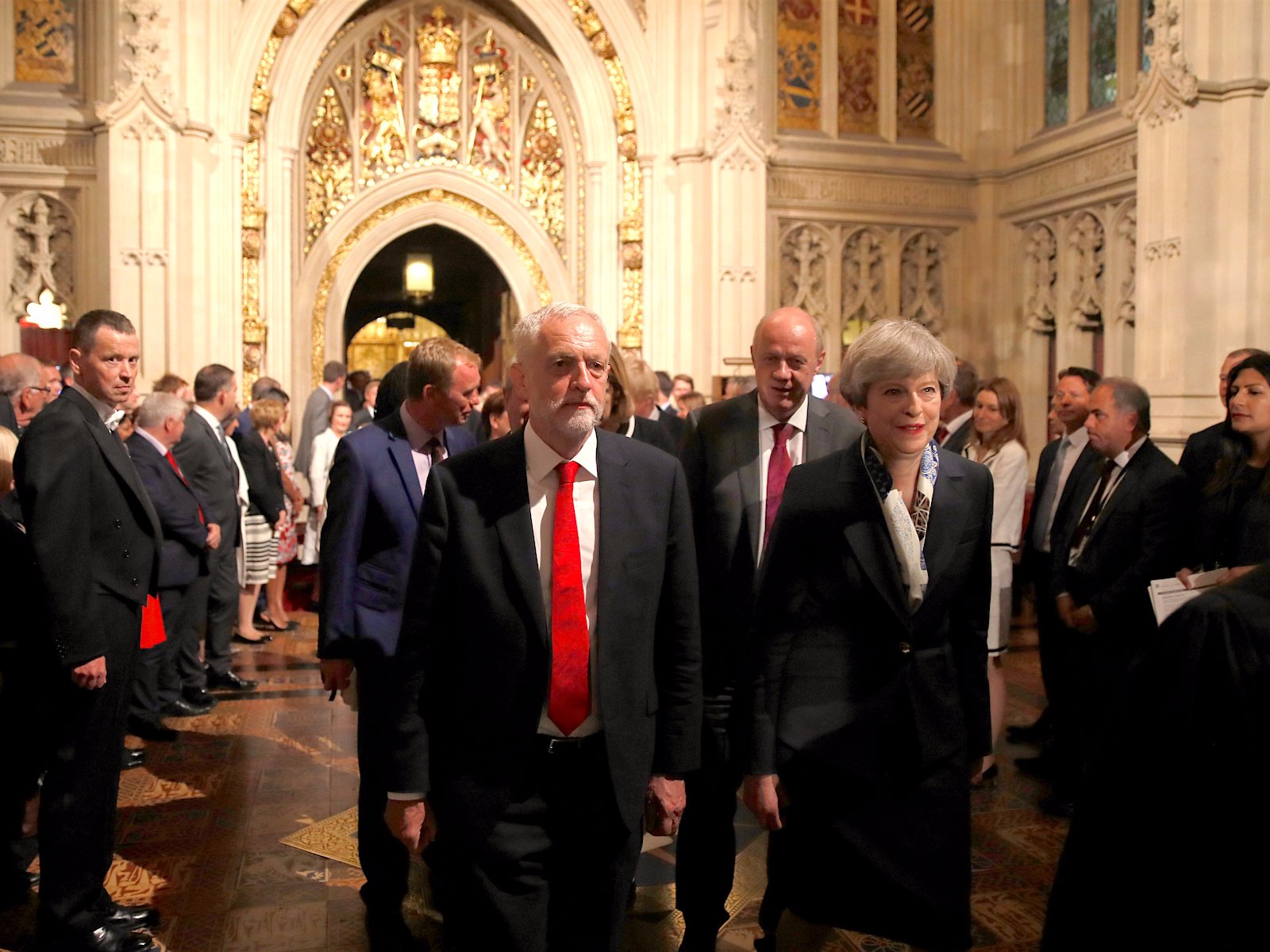 Prime Minister Theresa May and Labour leader Jeremy CorbynReuters
Prime Minister Theresa May and Labour leader Jeremy CorbynReuters
Last week Theresa May reached an agreement with the Democratic Unionist Party that gives the Conservatives minority government a working majority in the House of Commons on 13 MPs.
May and DUP leader Arlene Foster agreed a “confidence and supply” arrangement that will see 10 MPs from the Northern Irish party support the government in major votes like on the budget.
Prime Minister May agreed to a number of demands in order to persuade the DUP to sign up to the deal. For example, her Tory government will give £1.5 billion to the Northern Irish government to spend how it sees fit.
On Thursday night we saw the Tory-DUP pact in action for the first time when the two parties worked together to get the Queen’s Speech was passed. A majority of MPs backed May’s legislative program by 323 votes to 309.
Even with the DUP’s support, May is in a much more precarious position compared to prior to the election that she called. Here is the parliamentary mathematics you need to know as we head into new era of government
Where do we stand now?
The Conservatives have 317 MPs in the House of Commons and will be backed up by 10 MPs from the DUP.
Labour has 260 MPs eligible to vote, alongside 35 from the SNP, 12 from the Liberal Democrats, four from Plaid Cymru and Caroline Lucas of the Green Party.
There is also one independent unionist MP, Lady Sylvia Hermon, who resigned from the Ulster Unionist Party over its links with the Conservative Party.
How is this independent MP likely to vote?
Hermon is no big fan of the Tories but previously said she couldn’t back Labour under the leadership of Jeremy Corbyn. She voted with the government on the Queen’s speech on Thursday.
Anything else we need to know?
One Tory MP has become a deputy speaker, alongside two Labour MPs, depriving their respective parties of their votes. The Speaker of the House, John Bercow, also does not vote.
The seven Sinn Fein MPs who were voted in do not take their seats in Westminster by convention, as they refuse to swear an oath to the Queen due to their staunch republican beliefs.
This makes the task for the minority government slightly easier, as Sinn Fein would almost certainly voted against the Tories on a number of issues.
So what would it actually take for May’s majority to collapse?
It would take a rebellion of just seven MPs for the opposition parties to defeat the government in a vote, as all the other parties in the Commons add up to 313 seats.
Because of this, May has to remain wary of Tory rebellions over key issues or those of a more contentious nature, such as Brexit legislation that will be voted on later this year and beyond.
It’s also important to note that May’s slim majority could also be eroded over time through Tory MPs defecting to other parties or perhaps more likely through by-elections caused by resignations, illness or death.
How likely is this?
Historical analysis tells us that there are on average four by-elections per year. This is illustrated in the graph below.
 Twitter/Adam Bienkov
Twitter/Adam Bienkov
Between 1992 and 1997 the Tory government under John Major suffered a net loss of eight seats through by-elections. This would be enough to give opposition parties a majority if replicated during this parliament.
In four out of the 19 parliaments since the Second World War governing parties have lost seven or more seats. In the period from 1966 to 1970 the Labour government had a net loss of 15 seats due to 20 sitting MPs dying, although this is extremely unlikely to happen this time around.













